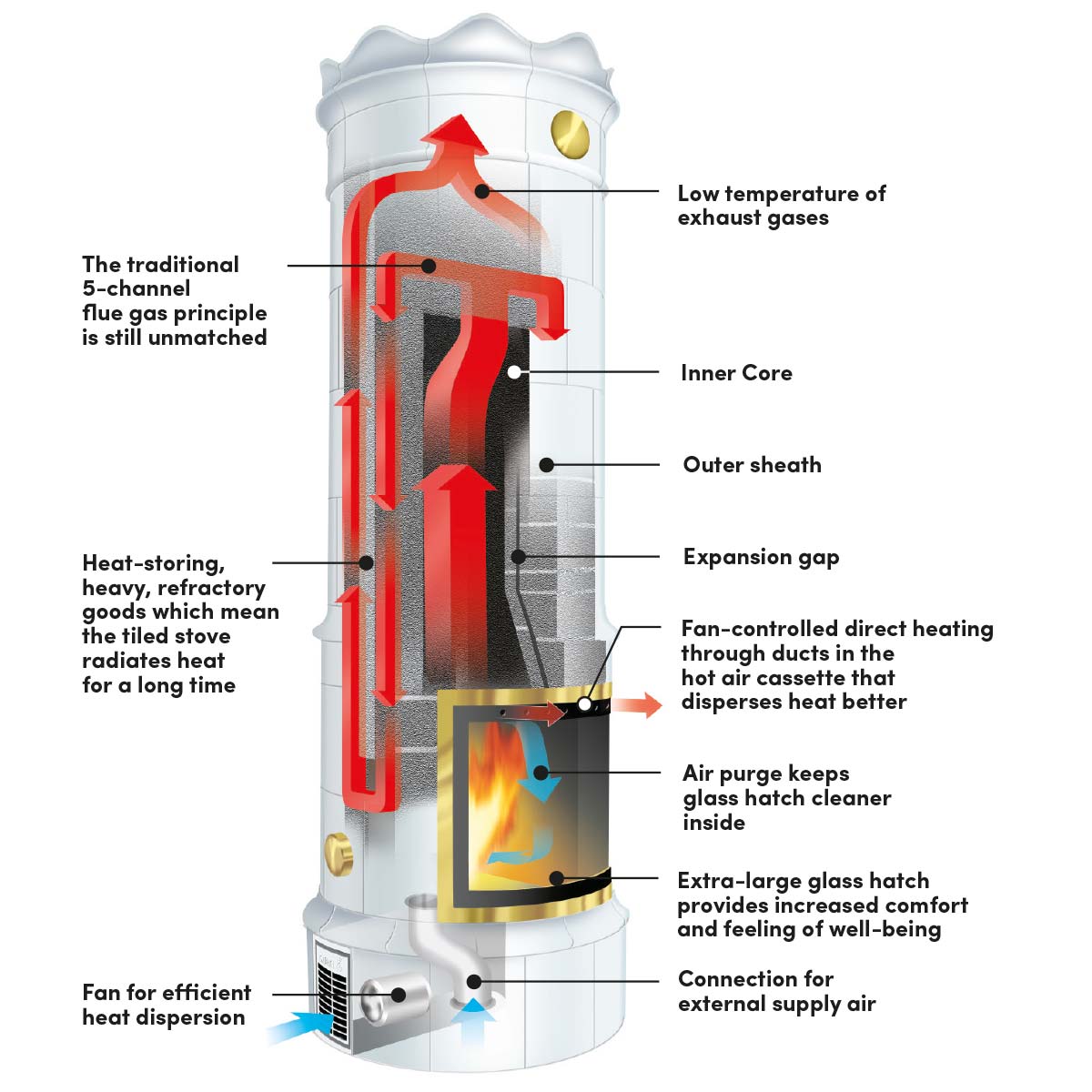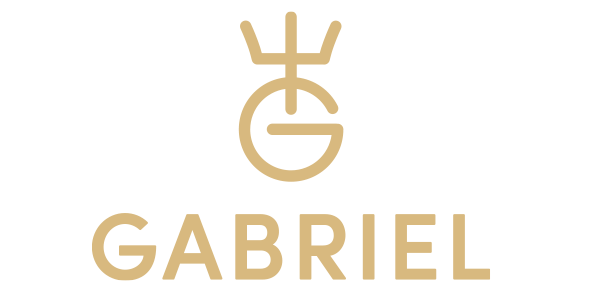The same principle as for 1767 but with an updated design
Our tiled stoves are built up of an ingenious modular system made of a fire-proof, heat-accumulating material consisting of an inner core and an outer jacket that are separated from each other. The inner core absorbs a large portion of the thermal expansion and mitigates the heat release of the stove. The efficient fireplace insert and the five-duct design contribute to exceptionally high efficiency.
Just as with other traditional Swedish tiled stoves, the heat is transferred from the flue gases to the heat-accumulating material in the stove. Our tiled stoves weigh between 1,100 and 1,400 kg and store the heat, which is subsequently evenly and comfortably released to the room for up to one day after the fire has gone out.
The in-house tiles are installed directly on the outer casing of the tiled stove. This is possible because the outer jacket and the inner core are separated from each other by an expansion gap to minimise the heat release of the stove.
The modern fireplace insert is equipped with a large glass door that provides increased comfort and a sense of fire. Air flushing keeps the glass cleaner on the inside and prevents soot. Fan-controlled direct heating makes it possible to heat cold air in the ducts in the fireplace insert and efficiently distribute the heat in the room.
The chimney connection is either upward or backward.





